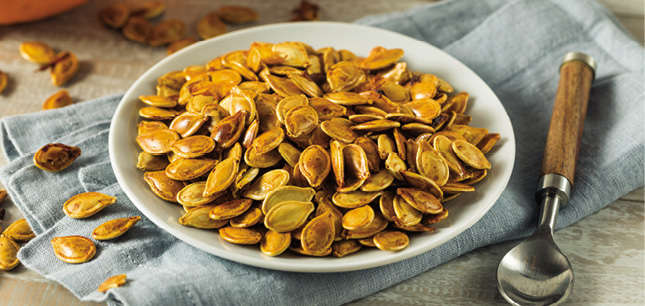Seeds can add a powerful nutritional punch to your diet. Both the Dietary Guidelines for Americans and the American Heart Association recommend these plant-based proteins because they are low in sodium and sugar and are great sources of vital minerals, fiber and omega-3 fatty acids. When consumed regularly, the right seeds may reduce blood pressure, blood sugar and cholesterol levels…and they provide protein for an energy boost.
How to add seeds to your diet: Start with a total of one tablespoon per day, and add more as your body becomes accustomed to the additional fiber. Examples: Add a tablespoon to a smoothie, yogurt or rice pudding. Caution: Consuming too much too fast can cause bloating, diarrhea and/or constipation and stomach cramps. Drink plenty of fluids to move the fiber through your system. Goal: 25 to 30 grams of fiber, and eight cups of fluids daily. Avoid: Salted varieties—we get enough salt in our diets.
Best seeds and how to add them to your diet…
Chia seeds absorb nine times their weight in water, which makes you feel fuller. Add the raw seeds to cereals, yogurt and salads. Also available: Energy bars that contain chia seeds.
Chia pudding: Mix one-quarter cup of chia seeds with one cup of coconut or almond milk and one-half teaspoon of vanilla extract. Add berries, nuts or oats or, for more sweetness, a little honey, agave or maple syrup. Refrigerate overnight until the mixture solidifies into a pudding.
Use as a thickener: Soak chia seeds in water to create a gelatinous texture that you can use as a substitute for eggs in baked goods. Or: Whisk three tablespoons of chia seeds into muffins and pancakes, in addition to the eggs, for the extra nutrition, fiber and crunch.
Flaxseed is one of the best studied of the healthy seeds. The brown and gold varieties are similar in nutritional value. Gold flaxseed has a mild taste…brown flaxseed has a nuttier taste. Buy preground flaxseed, or grind these hard-shelled seeds in a coffee grinder or seed mill for 30 seconds to release their nutrients. Fresh, whole flaxseed generally lasts for up to a year in an opaque, airtight container kept in the refrigerator. In the same type of container, ground flaxseed usually lasts for about six months in the freezer. Always discard any flaxseed that smells rancid.
Caution: Grind flaxseed really well if you have diverticulitis or another gastrointestinal problem so they don’t get stuck in the pockets of your colon.
Add them to your diet: Use ground-up flaxseed or flaxseed flour to replace one-quarter cup of white flour when making pancakes and baked goods. Or add ground flaxseed to cereals, smoothies, yogurt, puddings and salads.
Egg or fat substitute: Whisk three tablespoons of warm water with one tablespoon of ground flaxseed until the mixture thickens. It also can substitute for butter or cooking oil (replace three tablespoons of flaxseed for one tablespoon of the butter or oil—this is helpful for people who are vegan).
Quinoa (pronounced KEEN-wah) is a seed from the Chenopodium plant and a whole grain. It has more protein than a grain, is high in fiber and can be eaten by people on gluten-free diets. Quinoa has twice the amount of calcium as whole wheat. Important: Wash or soak quinoa before eating to remove the bitter-tasting coating.
Add it to your diet: Quinoa is great in place of rice or added to other side dishes, soups and salads, and you’ll find it in some fresh, organically prepared meals, granolas and protein bars.
For breakfast: Cook quinoa (use a one-to-two ratio of quinoa to liquid), and add whatever you like to this cereal base—nut butter, chopped nuts, ricotta cheese, berries, honey or cinnamon.
Pumpkin seeds, or pepitas, come shelled and unshelled, raw and roasted…or harvest them yourself from pumpkins. They don’t need to be cooked, but toasting them brings out their flavor. To toast seeds: Preheat the oven to 250°F. Spread seeds out on a baking sheet in a thin layer, spray lightly with oil, and toast until slightly brown (about 45 minutes).
Add them to your diet: Toasted pumpkin seeds taste similar to peanuts. You can eat them straight…add them to salads, soups and cereals…or grind them and fold them into baked goods.
Sunflower seeds have a satisfying crunch and a mild flavor. They are high in protein and fiber, and a good source of the antioxidant vitamin E.
Add them to your diet: Eat them raw or toasted by the handful…try them as a butter…add them to salads and rice dishes…or use them as a topping for breads and cakes.


